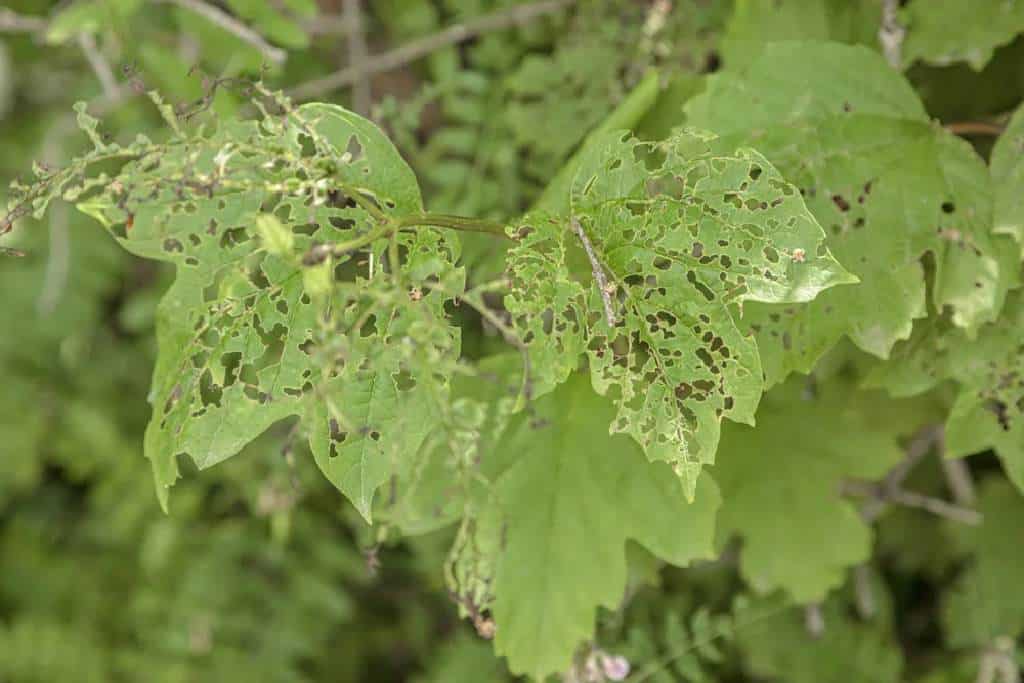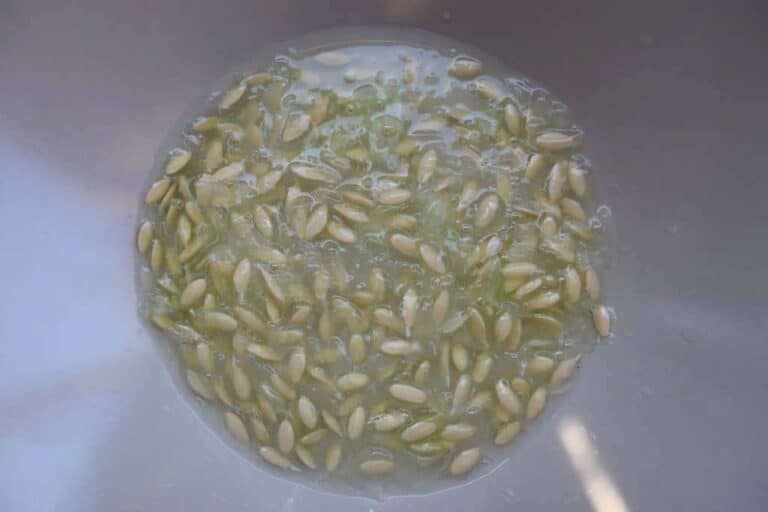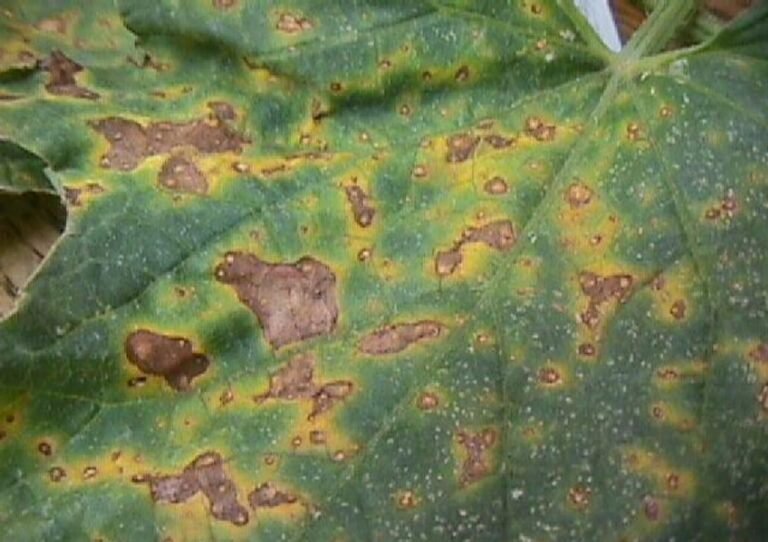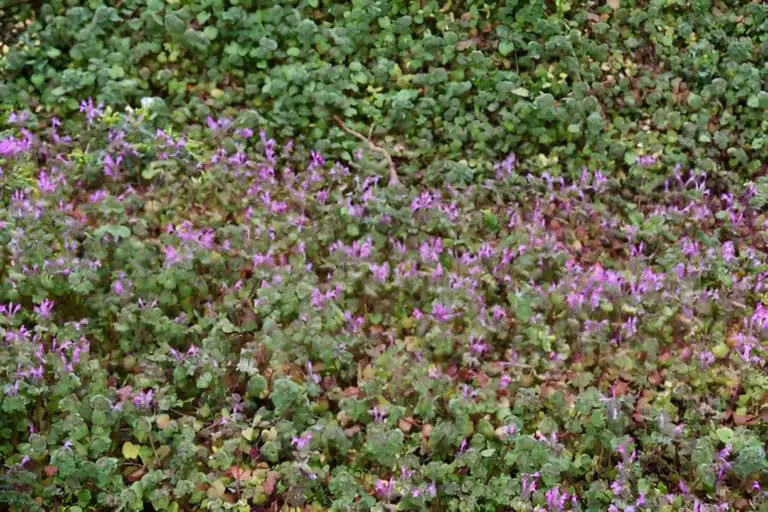Spotted Cucumber Beetle: 8 Proven Tips for Controlling and Prevention

Are you tired of dealing with the destructive and pesky Spotted Cucumber Beetle in your garden?
Say goodbye to the frustration of dealing with Spotted Cucumber Beetles in your garden. With this complete guide, you’ll learn how to stop these annoying beetles from destroying your plants and how to keep them from coming back.
Get ready to take back your growing cucumbers in the garden and protect your crops like a pro.
Spotted Cucumber Beetle Overview
The Spotted Cucumber Beetle (Acalymma vittatum) is a small, yellow and black striped beetle that can wreak havoc on cucumber plants. The beetles feed on the leaves, stems, and fruit of the plants, which can lead to wilting, yellowing of the leaves, and reduced fruit production.
Not only that, they can also spread bacterial wilt and other diseases, which can further harm the plants. Adult beetles can lay eggs on the soil near the plants, and the larvae will feed on the roots, causing more damage.
In this blog post, we will explore the identification of the Spotted Cucumber Beetle, its life cycle, habits, and the damage it causes to cucumber plants, as well as the various prevention and control measures that can be implemented to protect the plants.
How to Identify Spotted Cucumber Beetles?
The Spotted Cucumber Beetle is a small insect, measuring around 5-7 mm in length. It has a yellow or green body with black spots on the wing covers and long black antennae. The head and thorax are also black. It can be easily distinguished from other similar beetles by its yellow and black striped body.
Another way to identify the Spotted Cucumber Beetle is by its feeding habits. Adult beetles feed on the leaves, stems, and fruit of cucumber plants, as well as other plants in the cucurbit family, such as melons, squash, and pumpkins.
Take note that the Spotted Cucumber Beetle can be mistaken for other similar insects, such as the Western spotted cucumber beetle (Diabrotica undecimpunctata) and the striped cucumber beetle (Acalymma trivittatum).
However, they can be distinguished by the markings on their body and the plants they feed on. For example, the Western spotted cucumber beetle has 11 black spots on its wing covers and feeds on a wider range of plants than the Spotted Cucumber Beetle. The striped cucumber beetle has yellow and black stripes on its body but does not have black spots.
Life Cycle and Habits of Spotted Cucumber Beetles
The Spotted Cucumber Beetle goes through four stages in its life cycle: egg, larva, pupa, and adult.
The adult beetles spend the winter in the soil and come out when the weather starts to warm up in the spring. They will then fly to cucumber plants and other plants in the cucurbit family to feed and lay eggs. The eggs are laid on the soil near the base of the plants, and they will hatch in around one week.
The larvae, which are also known as grubs, feed on the roots of the plants for around 3–4 weeks before pupating in the soil. The pupal stage lasts for around one week, after which adult beetles will emerge. The entire life cycle from egg to adult can take around 4-6 weeks, depending on the temperature and humidity.
During the growing season, adult beetles will feed on the leaves, stems, and fruits of the plants, causing significant damage. They can also spread bacterial wilt and other diseases, which can further harm the plants. It’s important to know that the beetles are most active during the day and are drawn to the yellow flowers on the cucumber plants.
What Does a Spotted Cucumber Beetle Eat?
The adult Spotted Cucumber Beetle feeds on the leaves, stems, and flowers of a wide range of plants, including cucumbers, melons, pumpkins, and corn. They also feed on the pollen and nectar of wildflowers and other plants.
The larvae, also known as grubs, feed on the roots of plants, causing damage to the root system and potentially killing the plant. This can also make it hard for the plant to take in water and nutrients, which can cause more damage.
In addition to feeding on crops, they also feed on weeds and other wild plants. This means that they can be found in gardens, fields, and other areas where these plants grow. This makes controlling them a challenge, as they can easily move from one area to another.
Damage to Cucumber Plants

The Spotted Cucumber Beetle can cause a significant amount of damage to cucumber plants, both in the adult and larval stages. Adult beetles feed on the leaves, stems, and fruit of the plants, which can lead to wilting, yellowing of leaves and reduced fruit production. They can also spread bacterial wilt and other diseases, which can further harm the plants.
The damage is especially severe in the early stages of cucumber plant growth, when the plant is most vulnerable. Adult beetles can lay eggs on the soil near the plants’ bases, and the larvae will feed on the roots, causing more damage. This can lead to poor root development, which can affect the overall growth and productivity of the plant.
The damage caused by the Spotted Cucumber Beetle can also make the plant more susceptible to other pests and diseases. For example, if the leaves are heavily damaged, the plant will have a reduced ability to photosynthesize, which can affect the overall health of the plant.
In addition, the damage caused by the Spotted Cucumber Beetle can affect the quality and appearance of the fruit. Damaged fruit may have scars or changes in color that make it look bad to consumers. This makes it harder to sell the crop.
Prevention and Control Strategies: What Can Be Done?
In order to control the population of Spotted Cucumber Beetles, it is important to use a combination of methods. This can include using pesticides, trapping, and encouraging natural predators.
1. Crop Rotation
Rotating cucumbers with other crops that are not in the cucumber family, such as tomatoes, corn, or beans, can reduce the risk of an infestation. By switching up the crops, the beetles won’t have a good place to lay their eggs, which can help cut down on the number of beetles in the field.
2. Use Resistant Varieties
Some cucumber varieties have been developed that are resistant to the Spotted Cucumber Beetle. By using these varieties, growers can reduce the susceptibility of the plants to the beetles, and therefore reduce the risk of an infestation.
3. Plant Trap Crops
Planting crops that are attractive to the beetles, such as radishes or bluegrass, can draw the beetles away from the cucumber plants. This can help to reduce the number of beetles that will come into contact with the cucumber plants, reducing the risk of an infestation.
4. Monitor The Field Regularly.
Regularly monitoring the field for the presence of the beetles, eggs, and larvae, can help to detect an infestation early, which will make it easier to control.
5. Sanitation
A good sanitation practice can help prevent infestations. This means getting rid of any crop debris left on the field after harvesting, where the beetles can spend the winter. Also, it’s important to remove any volunteer cucurbit plants that may appear around the field, as these can serve as a source of infestation.
6. Handpicking
Handpicking can be effective in small gardens or when the infestation is still at an early stage. But how do you handpick these pesky critters? The first step is to regularly inspect your cucumber plants for signs of spotted cucumber beetle infestation. If you spot any beetles on the leaves or stems of your plants, use a pair of tweezers or a damp cloth to pick them off by hand.
You can get rid of the beetles you caught by dropping them into a cup of soapy water. This will kill them quickly and humanely without having to use chemicals.
7. Using Row Covers
Row covers are a type of lightweight fabric that goes on top of the soil and physically blocks insects from reaching your plants. The fabric also serves as a barrier to keep out other pests. It also has other benefits, like preventing damage from the wind, keeping birds and animals out, and keeping the soil moist.
The use of row covers can help protect your cucumber crops from spotted cucumber beetle infestations by creating a physical barrier between the plant and insect while allowing sunlight, air circulation, and water through. To make sure the cover is effective in blocking the pest, it should be secured at least six inches into the soil with stakes or rocks around the perimeter.
8. Pesticides or Insecticides
Chemical control methods involve using pesticides or insecticides to control the beetles. However, it’s important to use these products correctly and judiciously, in order to minimize any negative effects on the environment and human health. It’s also important to select the right product, read and follow the instructions, and use them at the appropriate time and frequency.
Conclusion
In conclusion, the Spotted Cucumber Beetle is a common pest that can cause significant damage to plants in gardens and fields. But if you use the tips and methods in this guide, you can protect your plants from these beetles and keep them under control.
From using row covers and traps to planting trap crops and using pesticides, there are a variety of options available for controlling the Spotted Cucumber Beetle. Remember to always follow the instructions on any products you use, and consider an integrated pest management approach for the best results. With the proper precautions and controls in place, you can keep these pesky beetles at bay and enjoy a bountiful harvest.






